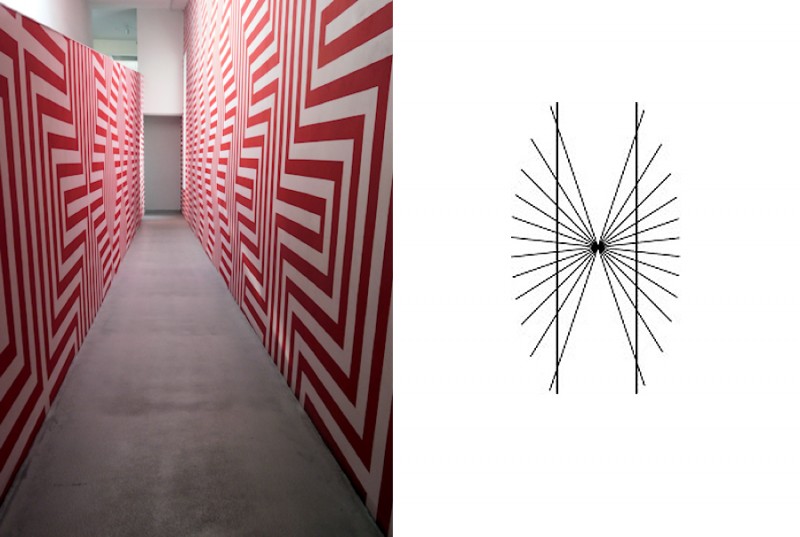This is an installation called Zig-Zag Corridor by Czech artist Petr Kvicala, in the Dox art centre in Prague, Czech Republic. He’s an artist who produces dazzling patterned effects. In this one, beautiful diagonals meander through the patterns, although the linework is entirely made up of a continuous sequence of horizontal and vertical segments.
However, as my friend Alex noticed, when he featured the installation on his site devoted to stunning photos of architecture in a district of Prague, Vrsovice Photo Diary, there’s another effect here as well: in places the walls seem to bow outwards in the middle, and the right wall doesn’t look flat at all. That’s because of an illusion that arises whenever long lines intersect or abut an array of parallel or systematically varying obliques, as to the right above. The apparently bowed long lines are objectively straight. It’s called the Hering illusion, first scientifically reported by Ewald Hering in 1861. It’s a special case of the more general Zollner illusion, published by the astronomer and mystic Johann Karl Friedrich Zollner a year earlier.
I don’t know whether the artist introduced these effects by accident (and they probably appear more strongly in photos than in the real installation). But it’s very, very easy for these illusions to sneak unintended into designs – as I let them do, when I failed to realise their contribution to a quite different effect in an earlier post.

